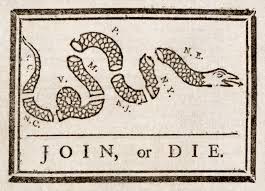The Battle of Brandywine: — Part 5 of 10
Howe Crosses 8 Miles North
By around 1:15 P.M., Howe's 8,000 troops had crossed the two fords along the upper Brandywine and were now on the east side, about 8 miles north of Washington's troops.
Howe had fooled Washington again. The methodical British general had pulled off a 14-mile march while successfully hiding an 8,000 man column. After Howe crossed the west branch of the Brandywine at Trimble's Ford, he moved north on the road toward Martin's Tavern. From there, he took a road to Jeffries' Ford and there crossed the east branch of the Brandywine. Jeffries' Ford was two miles north of Buffington's Ford, the furthest point north the Americans had posted soldiers.
Howe sent Jaegers from the British 42nd out to scout, under the leadership of Captain Johann Ewald. They recognized that they'd have to pass through a narrow gorge "where a hundred men could have held up either army the whole day." Ewald, wary of a trap, asked Cornwallis for permission to proceed, which was granted. It was fortunate for Ewald that they were able to proceed without opposition.
Once through the ford, Cornwallis ordered the remainder of the army to move as quickly as possible. The column took a wide right turn and headed through the village of Sconneltown where Howe halted so his tired, hungry and thirsty men could rest.
At Sconneltown, British foragers made a fortuitous discovery. Some Wilmington merchants had recently placed a large cache of liquor in a barn here thinking it would be safer than in the city. The merchants were wrong.
It was at this point that Squire Cheyney who had taken it upon himself to reconnoiter the British, discovered Howe's column. He frantically rode seven miles to the Ring House to deliver a manic message of warning to Washington which was greeted with skepticism. Cheyney's message, along with several other reports, finally convinced Washington — Howe was now to the rear of the American right.
By about 2:00 P.M., after receiving these new reports of Howe's movements that Washington recognized the dreadful truth: Howe had successfully moved around him and was positioned to attack from the north.
Washington Adjusts His Strategy
Responding to the threat from Howe's forces to his north, Washington once again ordered the divisions of Lord Stirling and Major General Stephen to move back north toward the Birmingham Meeting House. These brigades covered about three miles in a half hour, and started forming their lines along Birmingham Road. After ascertaining for certain that Howe's column was substantial in size, Washington ordered General Sullivan who was in charge of the entire right, to move north and meet the threat. Generals Wayne and Maxwell, with the support of Proctor's artillery, would have to face Knyphausen alone.
General Greene's troops remained in reserve — positioned to fight either Knyphausen or Cornwallis.
Tea Time for Howe

As Stirling and Stephen formed their troops, they could see the British advancing over Osborne Hill less than a mile to their north. The Redcoats progressed slowly as "it was extremely difficult to move the artillery over the heights." Once the artillery had crested the hill, Howe ordered a break of a half-hour for lunch and tea. After marching for nearly eleven hours and 17 miles, Howe's troops were safe for the moment and took time to rest and refresh. Howe, as was his pattern, did not follow up on what might have turned into a rout; Instead the picnicking general permitted the panicking Americans to form lines about a mile to his south.



